Opinion & Analysis
“We are past the time of superior and inferior product lines”

What was true, still is true and is likely becoming even more true is this: equipment doesn’t make any difference. Or perhaps more correctly, when analyzed with a single criteria of performance, the consumer has more choices now than ever before, all of which are top-shelf options.
You may decide to file that little bit of wisdom in the “duh” file. I know I’m treading on hallowed ground here and I’m certainly not one to claim I haven’t fallen victim to a marketing scheme or two. But if we look at the golf industry at a macro level, the real story is parity. No one makes a bad product and in fact, pretty much every major original equipment manufacturer turns out high-quality products worthy of play by the most demanding players in the world: touring professionals.
We are past the time of superior and inferior product lines. Many of us still remember Phil Mickelson’s back-handed compliment to Tiger Woods calling Tiger’s Nike equipment “inferior.” But that was 10 years ago, and my how times have changed.
Now demand for certain product lines is now largely a function of perception, customization and past behavior. As such, we’ve also witnessed market consolidation and OEM’s playing their own version of “anything you can do, I can do pretty much the same thing.” Call it shared technology or imitation, either way we certainly in a place where “it’s all good.”
Golf Balls
In late 2000, Titleist released its ProV1 ball in Las Vegas. Its game-changing ball marked a paradigm shift from wound-core balls to solid-core balls. Billy Andrade won that event in Vegas and the race to catch up to Titleist was on. Unfortunately, for all would-be suitors, Titleist was well down the road and to this day still holds nearly 50 percent of the ball market worldwide. It’s a pretty nice complement when TaylorMade CEO Mark King commented, “We’re not going to get into a fight with Titliest, at least not for the ball. It’s what they do. They would defend it till their death.” Enough said.
Don’t let the market dominance figures lead you to believe that the performance difference is anything but razor thin. Last year’s FedExCup winner, Brandt Snedeker, is just fine with his Bridgestone Tour B330 ball and nearly $15 million in 2012 earnings. Bridgestone has been producing golf balls since 1935 and most people don’t realize that Nick Price won the 1994 PGA Championship and 1994 British Open using a solid core ball from Precept (division of Bridgestone). Currently, Bridgestone, the No. 1 ball fitter in golf, offers four Tour-level solid core balls.
Callaway got into the ball market in 2000 by hiring Chuck Yash, formerly with TaylorMade. During the last decade, Callaway has expanded its offerings partnering with aerodynamic specialists at Boeing to determine efficient and effective dimple patterns. Currently, Callaway offers a Tour-level ball for higher swing speeds (Hex Black) and one for lower swing speeds (Hex Chrome). They’ve recently also added the HEX Chrome +, which fits in between.
Wedges
Inspired by the personal airplane of tycoon Howard Hughes, Gene Sarazen developed the blueprint for the modern sand-wedge. This was the late 1920s. In 1988, Cleveland golf introduced its fifth generation wedge, the 588. They looked basically the same. Now, most OEM’s (Titleist, Cleveland, Nike, Mizuno, etc.) offer multiple lofts, bounce options, grinds and finishes.
For those desiring a wedge-experience once reserved only for Tour pros, Titleist offers its WedgeWorks program. Wedge guru Bob Vokey and his team will build you a one-of-a-kind wedge with your choice of loft, grind, finish and stampings. Titleist launched this initiative in August of 2011, and soon thereafter Cleveland followed suit with its iteration, aptly named “My custom wedge.” Of course, this level of service isn’t anything new for customers of Scratch golf, the boutique brand which started in 2003 and whose motto “Your game customized” defines their entire business model.
Irons
There have always been myriad options for players wanting maximum workability and minimum forgiveness. Like many of you, I have fond memories of my Wilson staff blades, Hogan Apex blades, Mizuno MP-29s and well, you get the idea. Fast forward to the new millenium:
In 2008, Titleist introduced the AP2 (Advanced Performance) line of irons, which endeavored to broach the players category of irons buy offering tour level workability while maintaining the solid feel of a forged iron and increased forgiveness on mis-hits. In order to accomplish this, Titleist used multiple materials including forged steel (feel), tungsten weights (increased MOI) and an elastomer insert (vibration dampening and optimal sound). According to Titleist, the result is an iron with great feel, Tour-level workability and a traditional players appearance from address or in laymen’s terms, an iron any really really good golfer will love.
Titleist got the early jump in the category, but here’s a few products from other OEMs that are in the same category as the AP2’s:
- Adams CMB
- Callaway X Hot Pro
- Cobra AMP Forged
- Mizuno JPX-825 Pro
- Nike VR_S Forged
- Ping Anser Forged
- TaylorMade Rocketbladez Tour
Fairway Woods
Whether you call it a fairway wood or a “fairway metal,” this category was once more about reliability than distance. It was in this environment that Tour Edge Exotics found a niche market and a cult following. The “CB” series of fairway metals featured a titanium combo-brazed face and hyper-steel body, both attributes still found in the fifth edition (CB5) of the player-oriented fairway wood. The company touted it as the longest fairway metal available, even offering a money-back guarantee. And it’s easy to offer a guarantee when you’re right. However, without a connection to a major OEM and a comparatively higher price tag, the company simply couldn’t access a majority of this newfound market.
Enter TaylorMade “RocketBallz,” or RBZ. They debuted in 2012 and promised golfers 17 yards of increased fairway metal distance. Heck, Phil Mickelson the face of Callaway, even put an RBZ 3 wood in play until Callaway could come up with something to kick it out. This year, RBZ Stage 2 fairway woods are promising 10 more yards on top of the 17 from last year, an assertion the OEM no doubt believes is “ballz-ier” than before. In addition, Callaway promotes its new X Hot line of fairway metals to be “longer from everywhere.”
Also, building on momentum from 2012 and its acquisition by TaylorMade, Adams has fixed a couple quality control issues in its distance fairway line (XTD) with the Super LS series that have a characteristic time (CT) that approaches 250. The legal limit as set by the USGA is 256.
Hybrids
In 2002, TaylorMade produced one of the first hybrids, the Rescue Mid, that gained significant acceptance on professional tours. But it has been Adams Golf that has built a loyal and significant following on the senior PGA Tour and now is the most played hybrid worldwide.
Right now, it’s impossible to find an OEM that doesn’t offer some kind of hybrid or rescue in its current line. They’re longer, more attractive and more versatile than previous models across the board.
Driver
TaylorMade introduced MWT (moveable weight technology) in 2004 with the R7 quad driver. Naysayers labeled the club gimmicky and over-hyped marketing snake oil. Such armchair analysts general fail to mention that the R7 was used in 50 percent of victories on the PGA Tour that year. While this was a significant departure from the rest of the driver industry, it was nothing compared to what TaylorMade did in 2011. Call it the great golfing whiteout. TaylorMade introduced the R11 with a matte white club head. Black was out and white was in. It almost seemed antithetical, or sacrilege or something, but it was definitely different.
The R11 also had MWT, ASP (an adjustable sole plate) and the ability to change effective loft, lie and shaft via its FCT (Flight Control Technology). The gauntlet had been laid down.
Again, skeptics decried the new white paint and called it uglier than sin; a fad with less shelf-life than a Kardashian marriage. TaylorMade went on to lead world-wide usage in 2011, an exclamation point on a decade of dominance. In 2013, TaylorMade debuted the its R1, a white-headed driver with crown graphics. Also into colored drivers is Cobra (blue, silver, white, red, black and orange), Nike Covert (Red), Adams LS (white) and Callaway (matte grey).
Putter
Putters are as individual as the player themselves. They’re function over form, more art than science — or so we thought. Patented on March 21, 1967, the Ping Anser putter is the most emulated putter design of all time. Scotty Cameron has had success with its similar Newport and Newport 2 putters, while Odyssey calls its version simply #2. That being said, the Anser is still the bar, still the blueprint to which all similar putters will be compared. It’s kind of like when a brand becomes so powerful, you forget to remember it’s a brand; think Band-Aid, Kleenex, ChapStick, Q-Tip and Anser.
Lately, there’s been a trend of “grooved” putter faces. What began in 1995 with C-Groove technology lead by European putter designer Harold Swash, has now led to textured or “grooved” putter faces from nearly every manufacturer.
The Takeaway
No matter how you slice this pie or skin this cat, each and every major OEM is gold-list worthy in the court of public opinion, and more importantly on the course where incomes are earned. Contrarians will say that equipment contracts are all about money, and to a degree this is true. However, money in the absence of performance simply does not jive in this game of meritocracy. The player who chases short term money in place of long term success will only realize the former. As much as some of us like to debate the minutia of spec tolerances, grinds, finishes and the endless list of what differentiates one product from another, the simple truth is you and I would have the same handicap regardless of where our OEM allegiances lie.
We know there are lies, damn lies and statistics, but consider this:
World Rankings (as of March 1, 2013) by primary OEM sponsor
1. Nike
2. Nike
3. Mizuno
4. Bridgestone
5. Ping
6. TaylorMade
7. Titleist
8. Bridgestone
9. Ping
10. Cobra
11. Ping
12. Callaway
13. Titleist
14. Nike
15. Titleist
16. Titleist
17. TaylorMade
18. Srixon/Cleveland
19. Srixon/Cleveland
20. TaylorMade
21. Ping
22. TaylorMade
23. Nike
24. Callaway
25. TaylorMade
I know the sample size isn’t ideal, so take it for what it’s worth, but based on the top-25 players in the world:
4 play Nike
2 play Srixon/Clevland
1 plays Mizuno
2 play Callaway
5 play Taylor Made
4 play Titleist
4 play Ping
1 plays Cobra
2 play Bridgestone
Opinion & Analysis
The 2 primary challenges golf equipment companies face

As the editor-in-chief of this website and an observer of the GolfWRX forums and other online golf equipment discourse for over a decade, I’m pretty well attuned to the grunts and grumbles of a significant portion of the golf equipment purchasing spectrum. And before you accuse me of lording above all in some digital ivory tower, I’d like to offer that I worked at golf courses (public and private) for years prior to picking up my pen, so I’m well-versed in the non-degenerate golf equipment consumers out there. I touched (green)grass (retail)!
Complaints about the ills of and related to the OEMs usually follow some version of: Product cycles are too short for real innovation, tour equipment isn’t the same as retail (which is largely not true, by the way), too much is invested in marketing and not enough in R&D, top staffer X hasn’t even put the new driver in play, so it’s obviously not superior to the previous generation, prices are too high, and on and on.
Without digging into the merits of any of these claims, which I believe are mostly red herrings, I’d like to bring into view of our rangefinder what I believe to be the two primary difficulties golf equipment companies face.
One: As Terry Koehler, back when he was the CEO of Ben Hogan, told me at the time of the Ft Worth irons launch, if you can’t regularly hit the golf ball in a coin-sized area in the middle of the face, there’s not a ton that iron technology can do for you. Now, this is less true now with respect to irons than when he said it, and is less and less true by degrees as the clubs get larger (utilities, fairways, hybrids, drivers), but there remains a great deal of golf equipment truth in that statement. Think about it — which is to say, in TL;DR fashion, get lessons from a qualified instructor who will teach you about the fundamentals of repeatable impact and how the golf swing works, not just offer band-aid fixes. If you can’t repeatably deliver the golf club to the golf ball in something resembling the manner it was designed for, how can you expect to be getting the most out of the club — put another way, the maximum value from your investment?
Similarly, game improvement equipment can only improve your game if you game it. In other words, get fit for the clubs you ought to be playing rather than filling the bag with the ones you wish you could hit or used to be able to hit. Of course, don’t do this if you don’t care about performance and just want to hit a forged blade while playing off an 18 handicap. That’s absolutely fine. There were plenty of members in clubs back in the day playing Hogan Apex or Mizuno MP-32 irons who had no business doing so from a ballstriking standpoint, but they enjoyed their look, feel, and complementary qualities to their Gatsby hats and cashmere sweaters. Do what brings you a measure of joy in this maddening game.
Now, the second issue. This is not a plea for non-conforming equipment; rather, it is a statement of fact. USGA/R&A limits on every facet of golf equipment are detrimental to golf equipment manufacturers. Sure, you know this, but do you think about it as it applies to almost every element of equipment? A 500cc driver would be inherently more forgiving than a 460cc, as one with a COR measurement in excess of 0.83. 50-inch shafts. Box grooves. And on and on.
Would fewer regulations be objectively bad for the game? Would this erode its soul? Fortunately, that’s beside the point of this exercise, which is merely to point out the facts. The fact, in this case, is that equipment restrictions and regulations are the slaughterbench of an abundance of innovation in the golf equipment space. Is this for the best? Well, now I’ve asked the question twice and might as well give a partial response, I guess my answer to that would be, “It depends on what type of golf you’re playing and who you’re playing it with.”
For my part, I don’t mind embarrassing myself with vintage blades and persimmons chasing after the quasi-spiritual elevation of a well-struck shot, but that’s just me. Plenty of folks don’t give a damn if their grooves are conforming. Plenty of folks think the folks in Liberty Corner ought to add a prison to the museum for such offences. And those are just a few of the considerations for the amateur game — which doesn’t get inside the gallery ropes of the pro game…
Different strokes in the game of golf, in my humble opinion.
Anyway, I believe equipment company engineers are genuinely trying to build better equipment year over year. The marketing departments are trying to find ways to make this equipment appeal to the broadest segment of the golf market possible. All of this against (1) the backdrop of — at least for now — firm product cycles. And golfers who, with their ~15 average handicap (men), for the most part, are not striping the golf ball like Tiger in his prime and seem to have less and less time year over year to practice and improve. (2) Regulations that massively restrict what they’re able to do…
That’s the landscape as I see it and the real headwinds for golf equipment companies. No doubt, there’s more I haven’t considered, but I think the previous is a better — and better faith — point of departure when formulating any serious commentary on the golf equipment world than some of the more cynical and conspiratorial takes I hear.
Agree? Disagree? Think I’m worthy of an Adam Hadwin-esque security guard tackle? Let me know in the comments.
@golfoncbs The infamous Adam Hadwin tackle ? #golf #fyp #canada #pgatour #adamhadwin ? Ghibli-style nostalgic waltz – MaSssuguMusic
Podcasts
Fore Love of Golf: Introducing a new club concept

Episode #16 brings us Cliff McKinney. Cliff is the founder of Old Charlie Golf Club, a new club, and concept, to be built in the Florida panhandle. The model is quite interesting and aims to make great, private golf more affordable. We hope you enjoy the show!
Opinion & Analysis
On Scottie Scheffler wondering ‘What’s the point of winning?’

Last week, I came across a reel from BBC Sport on Instagram featuring Scottie Scheffler speaking to the media ahead of The Open at Royal Portrush. In it, he shared that he often wonders what the point is of wanting to win tournaments so badly — especially when he knows, deep down, that it doesn’t lead to a truly fulfilling life.
View this post on Instagram
“Is it great to be able to win tournaments and to accomplish the things I have in the game of golf? Yeah, it brings tears to my eyes just to think about it because I’ve literally worked my entire life to be good at this sport,” Scheffler said. “To have that kind of sense of accomplishment, I think, is a pretty cool feeling. To get to live out your dreams is very special, but at the end of the day, I’m not out here to inspire the next generation of golfers. I’m not out here to inspire someone to be the best player in the world, because what’s the point?”
Ironically — or perhaps perfectly — he went on to win the claret jug.
That question — what’s the point of winning? — cuts straight to the heart of the human journey.
As someone who’s spent over two decades in the trenches of professional golf, and in deep study of the mental, emotional, and spiritual dimensions of the game, I see Scottie’s inner conflict as a sign of soul evolution in motion.
I came to golf late. I wasn’t a junior standout or college All-American. At 27, I left a steady corporate job to see if I could be on the PGA Tour starting as a 14-handicap, average-length hitter. Over the years, my journey has been defined less by trophies and more by the relentless effort to navigate the deeply inequitable and gated system of professional golf — an effort that ultimately turned inward and helped me evolve as both a golfer and a person.
One perspective that helped me make sense of this inner dissonance around competition and our culture’s tendency to overvalue winning is the idea of soul evolution.
The University of Virginia’s Division of Perceptual Studies has done extensive research on reincarnation, and Netflix’s Surviving Death (Episode 6) explores the topic, too. Whether you take it literally or metaphorically, the idea that we’re on a long arc of growth — from beginner to sage elder — offers a profound perspective.
If you accept the premise literally, then terms like “young soul” and “old soul” start to hold meaning. However, even if we set the word “soul” aside, it’s easy to see that different levels of life experience produce different worldviews.
Newer souls — or people in earlier stages of their development — may be curious and kind but still lack discernment or depth. There is a naivety, and they don’t yet question as deeply, tending to see things in black and white, partly because certainty feels safer than confronting the unknown.
As we gain more experience, we begin to experiment. We test limits. We chase extreme external goals — sometimes at the expense of health, relationships, or inner peace — still operating from hunger, ambition, and the fragility of the ego.
It’s a necessary stage, but often a turbulent and unfulfilling one.
David Duval fell off the map after reaching World No. 1. Bubba Watson had his own “Is this it?” moment with his caddie, Ted Scott, after winning the Masters.
In Aaron Rodgers: Enigma, reflecting on his 2011 Super Bowl win, Rodgers said:
“Now I’ve accomplished the only thing that I really, really wanted to do in my life. Now what? I was like, ‘Did I aim at the wrong thing? Did I spend too much time thinking about stuff that ultimately doesn’t give you true happiness?’”
Jim Carrey once said, “I think everybody should get rich and famous and do everything they ever dreamed of so they can see that it’s not the answer.”
Eventually, though, something shifts.
We begin to see in shades of gray. Winning, dominating, accumulating—these pursuits lose their shine. The rewards feel more fleeting. Living in a constant state of fight-or-flight makes us feel alive, yes, but not happy and joyful.
Compassion begins to replace ambition. Love, presence, and gratitude become more fulfilling than status, profits, or trophies. We crave balance over burnout. Collaboration over competition. Meaning over metrics.
Interestingly, if we zoom out, we can apply this same model to nations and cultures. Countries, like people, have a collective “soul stage” made up of the individuals within them.
Take the United States, for example. I’d place it as a mid-level soul: highly competitive and deeply driven, but still learning emotional maturity. Still uncomfortable with nuance. Still believing that more is always better. Despite its global wins, the U.S. currently ranks just 23rd in happiness (as of 2025). You might liken it to a gifted teenager—bold, eager, and ambitious, but angsty and still figuring out how to live well and in balance. As much as a parent wants to protect their child, sometimes the child has to make their own mistakes to truly grow.
So when Scottie Scheffler wonders what the point of winning is, I don’t see someone losing strength.
I see someone evolving.
He’s beginning to look beyond the leaderboard. Beyond metrics of success that carry a lower vibration. And yet, in a poetic twist, Scheffler did go on to win The Open. But that only reinforces the point: even at the pinnacle, the question remains. And if more of us in the golf and sports world — and in U.S. culture at large — started asking similar questions, we might discover that the more meaningful trophy isn’t about accumulating or beating others at all costs.
It’s about awakening and evolving to something more than winning could ever promise.


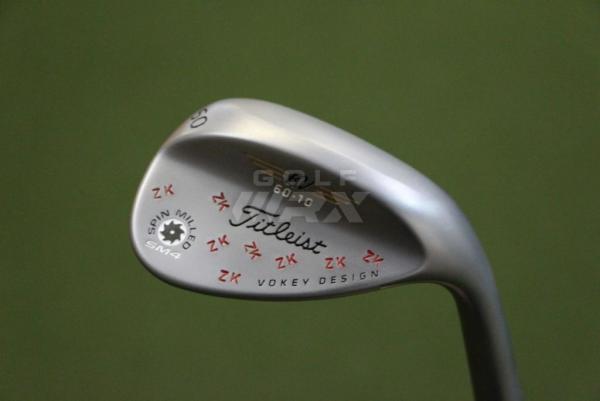






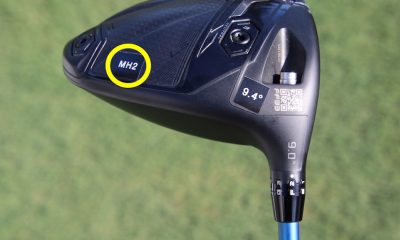

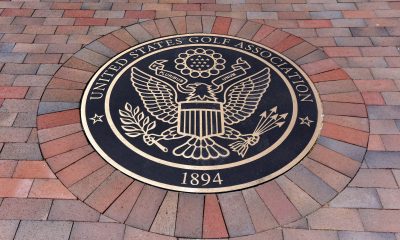





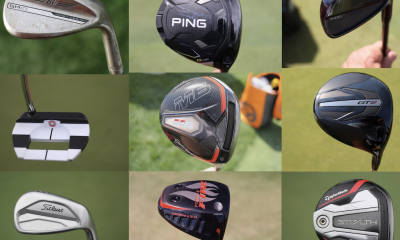

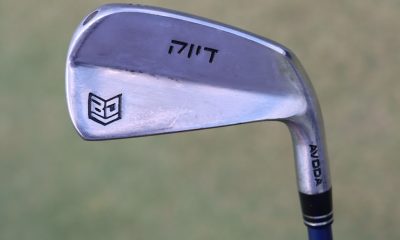









Pingback: Considering A Macgregor Tourney Junior Individual Woods
dg7936
Aug 10, 2013 at 9:12 pm
There may be MORE well-made products available today: however there are many more gimmicky products on the market also. Comparing product lines from the 80’s, most manufacturers had a small number of iron and wood models to manufacture versus the wide range of products available today..hybrids, gap and lob wedges, high-tech balls, exotic putters. So all of these may be well-made but will never create the following of the older companies who specialized in truly excellent products…hogan/macgregor/ram irons, powerbilt citation woods, etc etc. We have a more democratic market but also more marketing. Which does not really work, as the average handicap has remained the same for 20+ years. So where is the benefit to the average joe?
undermined
Apr 26, 2013 at 10:28 pm
All this “history” and no mention of Wilson or MacGregor. Wilson is still around and makes outstanding forged irons and nice wedges.
G
Apr 12, 2013 at 3:44 am
Except for the crap you can still buy at places like Walmart, Kmart, Target, Sports Authority, Sport Chalet, etc etc……. you know, them places where they still sell the inferior brands?
This article is bogus.
DJ Golf
Apr 3, 2013 at 2:54 am
When everyone is special, no one is special.
Matt
Mar 28, 2013 at 5:07 pm
Fact is Tiger switched from titleist also….everyone usually does.
Rory will figure it out!
Tiger did
PAul Roberts
Apr 5, 2013 at 9:33 am
Very true, however it took Tiger years’s to switch to a bag full of Nike (forget the putter), He went with Nike driver and ball but still used Titleist woods, irons and wedges for a few years until Nike built what he wanted/liked.
lbholly
Mar 27, 2013 at 3:27 pm
I’m Calling BS on all the history in this article you obviously knew nothing of the golf business pre 2008
gunmetal
Mar 25, 2013 at 12:09 am
Not to mention all of the offerings from brands that don’t pay pros to use their products…Wishon, KZG, Miura, Scratch, Scor, etc. All of that stuff is just as good as pay for play stuff, just not as recognizable.
Rich
Mar 24, 2013 at 12:02 am
Great article. Funny how a companies like mizuno,bridgestone, and cobra are in the top 25 yet they barely pay anyone out there to play their clubs unlike other companies!
NG
Mar 25, 2013 at 4:49 am
They would too, if they could….
footwedge
Mar 27, 2013 at 10:03 am
Also, the big brands that have many players on their payroll should be winning a proportinately larger share of tourneys, buy they don’t. Equalized statistics will emphasize the fact that no brand is far superior, regardless of their marketing budget.
marionmg
Feb 15, 2014 at 10:27 pm
I wouldn’t say Bridgestone barely paid DL3 to leave Titleist…just sayin’
Gabbo
Mar 23, 2013 at 9:30 pm
Good article. While there has been a lot of innovation the past 10 years, the overwhelming majority of stuff out made the last 5 years is REALLY good. And with a soft used market, everybody has access to excellent equipment for dirt cheap.
It’s a far cry from 20 years ago where you either ponied up big $$$ for top notch clubs or were stuck playing truly inferior discount clubs and clones.
chris
Mar 22, 2013 at 3:34 pm
Would agree from a pros perspective where they are fitted with the best of the best. From a retail perspective, fit and finish, quality of components (including real and made for shafts), and clubs built true to specs are miles apart. Most OEMs can’t even get the grips on straight….
Todd
Mar 22, 2013 at 2:18 pm
How can you put Nike as the world #1 (Rory) when he has been anything but since the switch. He earned the spot with Titleist, he is giving it away with Nike.
Blanco
Mar 23, 2013 at 11:15 pm
The author’s made a simple list showing who sponsors each player in the top 25… not an endorsement.
Keep beating the ‘Titleist rules/Rory’s a sellout’ to death–